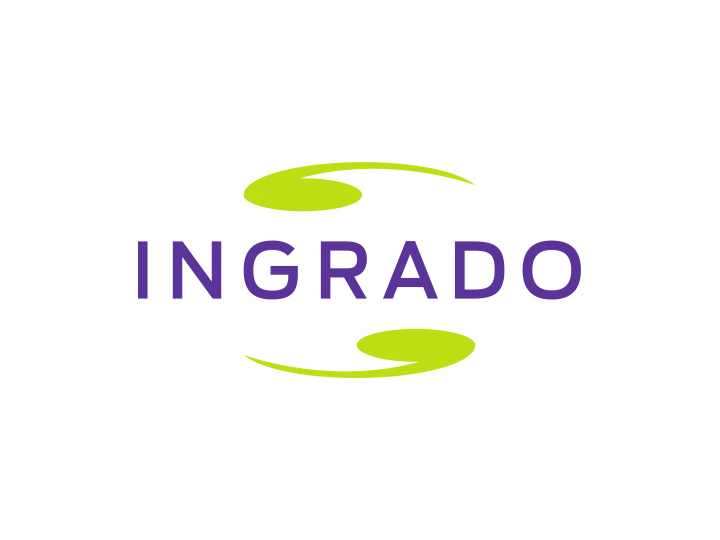



Participation and Qualification the Ingrado view on early school leaving NETHERLANDS STUDY TOUR ON EARLY SCHOOL LEAVING 10-13 NOVEMBER 2014 THE HAGUE, THE NETHERLANDS
Subjects to cover What is Ingrado? Early school leaving in the Netherlands The Ingrado view on battling ESL
Ingrado The Dutch national association of professionals working in the field of compulsory education and the prevention of early school leaving Essere in grado (italian): to be able to
Ingrado Members are the professionals in 400 out of 403 municipalities and all of the 39 regions Governed by a chosen board, twice a year a national assemblee Organized in 6 districts and a national centre of expertise (The Hague) Funded by annual contribution of the members and government grants
Ingrado: mission Mission: Ingrado is actively involved in protecting and strengthening the right to an education The association supports/encourages policy aimed at participation of youth in school and work The association creates good working conditions for its members
Municipalities - 403 municipalities - 1121 in 1900 - 12 provinces - G4 - G32
RMC -regions
Short Break 1 Where are you now?
Educational system
Compulsory education First day of the month after 5th birthday Customarily children are enrolled at 4 Ends at 16th birthday, unless student has not succesfully finished either HAVO, VWO or MBO (start qualification) In that case education is still compulsory until 18th birthday or start qualification is achieved
Short Break 2 A story about a horse and its master
RMC Focus on youth from 18 till 23 years National funding since 2000 for 39 regions Main objectives: – To know the ‘status’ of youth in the region – To know, use and optimize the network of facilities for the youth – To actively redirect early schoolleavers to education (or to combination of work and learning
RMC-targets Decreasing the number of new early schoolleavers Striving for optimal participation in society: redirecting former early schoolleavers Optimizing qualification level
Why ? Knowledge as economical factor International economical competition Battle against youth unemployment Safety in the streets Democracy and citizenship but, first and foremost:
Children’s right to education
And furthermore ……. Research: - starter’s qualification (CBS 2012): with 8 out of 10 a job, without 6 out of 10 - Youth without 3 times more suspected of crimes/misdemeanor - More than one in 10 unemployed ESL suspected of crime (11,3% vs 1,5%)
Short Break 3 How to best spend your money
Costs and benefits Econometric research: interventions are worthwhile investments Money saved (welfare, crime, care, health) Money earned (trade, innovation) Difficulty: the financial and political horizon
National policy on ESL Lisbon target From 15,4% in 2000 to 8,8% in 2012 ESL (18-25 years) Focus on new ESL: 4% (05-06) to 2,8% (11-12) 70.000 52.500 36.500 Target for 2016: 25.000 (new ESL) Regional Convenants
Latest survey Total number of participants and number of new ESL 2012-2013 participants ESL % ESL VO 931.924 4.836 0,5% MBO 389.337 22.203 5,7% VAVO 5.380 721 13,4% Total 1.326.641 27.760 2,1%
Measures Compulsory education as a tool Regional Convenants Preventive action in secondary vocational education
Compulsory education as a tool Law of 1900, law of 1969, extended in 2007 Responsible parties: parents, schools, municipalities, youth Focus on enrollment and attendance Municipalities working together 1 professional for every 3800 children
Compulsory education Truancy - Failing to enroll - Not attending according to school programme (absence of 16 hours in four uninterrupted weeks) Leave of absence Thuiszitters (‘home dwellers ’)
Convenants 1st: G4 2007 2nd: 39 regions 2008-2011 3rd: 39 regions 2012-2015
Approaches Care in and around school Orientation on vocational training and occupation/ career counselling Policy on attendance Link between education and jobs
New ESL – other tasks Preventive activities: more and more secondary vocational school reporting on non-attendance Counselling ’ old ESL’ Expanding the age frame: from 23 to 27, working together with social services
Why again? Educational system works for the majority of youth to be able to build themselves a future For those for whom the system doesn’t work we make an extra effort for they deserve it too … and we simply can’t miss them or afford to see them dependent on society
How again? The extra effort is made by national and local government, effectively by schools and our professionals These professionals are the guardians of the right to education, not enforcing obligatory education as a goal but as a means: to enable youth to participate and qualify To this end the professional himself needs to be able to handle a complicated task
Ingrado: activities 4 programmes: Communication and information Professionalizing Policy and advice Knowledge and research
Ingrado: making the link From municipality to region to district to national level …and vice versa Aiming for the professional working with youth Aiming for policy and decision makers
Ingrado: up to date professionals Ingrado Magazine Website Legal advice Newsletter Conferences District-meetings Training and peer review
Questions?
Recommend
More recommend